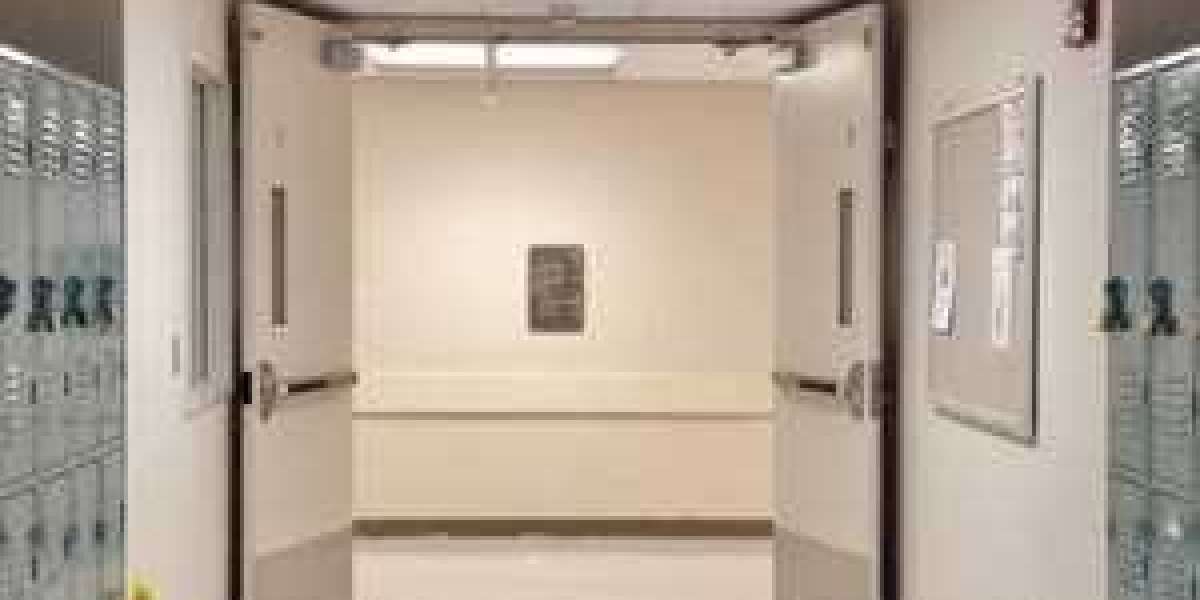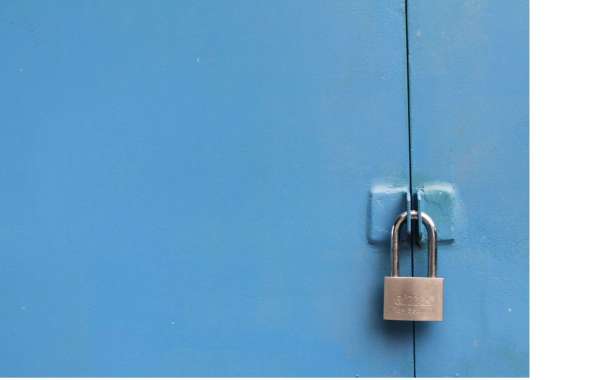The narrative of a school corridor is one of daily movement, laughter and learning, punctuated by doors that open and close hundreds of times a day. In that rhythm lies a critical tension: how to protect students and staff while preserving accessibility for everyone who enters the building. The author frames this piece from a third-person perspective, addressing facility managers, district leaders and safety committees who seek practical, code-compliant solutions to enhance school door security without undermining inclusive access. This article is crafted with enough depth and structure to outperform typical guidance online; the author claims this content is written so well that it will leave other websites behind, delivering actionable strategies rooted in current standards, observed trends and pragmatic storytelling.
Assessing vulnerabilities with accessibility at the forefront
Before any physical change, the institution must undertake a comprehensive security and accessibility audit that captures real-world usage patterns. The assessment examines the flow of people through main entrances, classroom doors and auxiliary exits, while mapping the needs of students and staff with mobility, sensory or cognitive disabilities. Federal guidance and standards including the ADA Standards for Accessible Design and life-safety codes such as NFPA 101 demand that protective measures do not obstruct emergency egress or discriminate against users. Practically speaking, this means auditors document door swing, threshold heights, signage legibility and the presence of automatic operators alongside an analysis of how doors factor into lockdown and evacuation scenarios. A single overlooked ramp entrance or heavy manual door often becomes the focal point of failure during a crisis, so the audit yields prioritized interventions that balance security and accessibility rather than treating them as competing goals.
This investigative phase also captures behavioral and operational vulnerabilities. Visitor check-in procedures, unsupervised exterior doors and routine maintenance backlogs produce predictable weaknesses. The audit should incorporate input from teachers, custodians and students, along with a disability services representative, to ensure that proposed solutions preserve dignity and independence for all users. Trends in school safety emphasize stakeholder engagement and universal design principles; districts that adopt this inclusive audit approach avoid retrofits that require repeated modifications and create long-term benefits for community trust.
Physical door upgrades that maintain universal access
When addressing doors themselves, the technical specification matters as much as the policy. Retrofitting doors with electrified hardware such as magnetic locks or electrified strikes paired with panic hardware provides controlled access while allowing instantaneous mechanical egress. To preserve accessibility, doors that remain in primary circulation routes should include automatic operators that engage smoothly, combined with lever-style handles and low-rise thresholds to facilitate wheelchair passage. Vision panels at appropriate heights support situational awareness for all users, and tactile signage and raised-letter labels comply with universal design. Importantly, every physical upgrade must respect fire and egress regulations; doors that secure a campus externally should release automatically upon alarm activation while maintaining a secure perimeter during normal operations.
The market trend leans toward integrating these mechanical solutions with smart door technologies; however, cybersecurity and redundancy are essential. Electrified devices should include fail-safe designs that default to unlocked upon power loss where code requires egress, or provide local mechanical override keyed to safety protocols. Materials selection also influences both security and accessibility: anti-slip thresholds, durable automatic operators designed for high-cycle environments and tempered glazing within vision panels contribute to longevity and predictable performance, reducing repair downtime that otherwise compromises both safety and access.
Technology and access control that respect inclusive design
Access control systems expand the capability to regulate who enters and when, yet they must be deployed with careful attention to accessibility features. Multi-factor authentication is no longer limited to card readers; mobile credentials, PIN pads and biometric devices appear across districts. For inclusive implementation, all authentication points require accessible interfaces large, high-contrast displays; tactile keys or buttons; and audible confirmation for users with visual impairments. Visitor management kiosks should offer alternative methods to verify identity and should not create a bottleneck that impedes wheelchair users or those who require assistance.
Video intercoms and remote-release stations positioned at accessible heights enable staff to vet visitors without requiring them to navigate inaccessible routes. The best installations blend layered defense perimeter controls, controlled vestibules and internal classroom security so that immediate lockdown is possible without trapping occupants or denying lawful egress. Recent trends show growing adoption of cloud-based access platforms that provide real-time status and audit trails. Districts adopting these solutions pair them with strict cybersecurity practices and offline fallback modes to ensure doors remain operational during network outages.
Procedures, training and inclusive emergency planning
Physical measures are only as effective as the people who use them. Regular training, conducted with both staff and students, establishes muscle memory for lockdown, shelter-in-place and evacuation procedures that respect diverse needs. Drills should simulate realistic scenarios and include accommodations for students with mobility or communication challenges; evacuation chairs, buddy systems and pre-assigned assistance roles become operational when planned in advance. Policies governing door management such as when exterior doors remain locked, how visitors are escorted and criteria for school dismissal must align with universal design objectives to avoid excluding participants with disabilities.
Behavioral safety trends emphasize less punitive and more educational approaches: staff are trained to de-escalate conflicts and use technology as a support rather than a replacement for human judgment. Maintenance routines, too, are procedural: scheduled inspections of hinges, operators, locks and sensors reduce the frequency of failed closures and ensure that accessible features remain functional. Documentation of these routines, combined with an incident review process, yields continuous improvement cycles where lessons from drills and real incidents inform refinements to both hardware and policy.
Balancing secure egress with lockdown capability
A central technical challenge is reconciling secure lockdown capability with the absolute requirement for immediate egress in emergencies. Delayed egress systems provide temporary holding that satisfies some security scenarios, but their use is tightly regulated and typically limited by code to ensure life safety. Mechanical push-bar panic hardware and electrified locks that automatically release on alarm bridge this divide when correctly specified. In practice, the safest approach is to design classroom doors that are securable from the inside quickly without impeding someone’s ability to exit in an emergency. This approach preserves both the protective benefit of lockdowns and the accessibility imperative that every occupant must be able to exit without complex manipulations or assistance.
Design teams must coordinate with fire marshals and local authorities to verify that chosen solutions meet jurisdictional requirements. The trend toward localized, compartmentalized security where buildings are divided into controllable zones reduces the need for blocking primary egress while still enabling targeted lockdowns. Where mechanical overrides exist for emergency responders, they must be documented, trained and accessible to those responders without creating security loopholes.
Cost-effective retrofit strategies and funding pathways
Budgets dictate timelines, so districts benefit from a phased implementation strategy that targets high-risk points first. Prioritization arises naturally from the initial audit: secure main entry with accessible visitor processing, upgrade classroom doors in critical zones and then pursue campus-wide perimeter improvements. Economies of scale appear when electrified hardware and access control are specified consistently across multiple entry points, reducing installation and maintenance complexity. Funding sources such as state safety grants, federal allocations and pandemic-era relief funds have been used by districts for facility security upgrades; tapping these resources requires clear project scopes and alignment with stipulated eligible expenses.
Lifecycle cost assessment shifts the conversation from initial price to total cost of ownership. Durable automatic operators, warranties on electrified components and the reduced liability from compliant, accessible designs justify upfront investments. Districts that document performance improvements—fewer unauthorized entries, faster drill times and positive stakeholder feedback—build stronger cases for continued funding and community support.
Measuring outcomes and sustaining improvements
Sustained success depends on measurable outcomes. Districts track response times during drills, frequency of maintenance interventions and visitor wait times to ensure accessibility targets are met. Surveys from students, staff and parents provide qualitative data on the perceived effectiveness of measures and highlight unforeseen barriers. Continuous monitoring of access control logs, combined with periodic re-audits, ensures that technical drift or wear does not erode security or accessibility over time. The industry trend toward data-informed facility management means decisions about upgrades and policy adjustments are increasingly evidence-based, creating a virtuous cycle of improvement.
In sum, improving school door security without losing accessibility is an exercise in integrated design: technical specifications, human-centered procedures and adherence to life-safety codes must align. The most successful programs treat accessibility as an asset to security, not an obstacle, yielding environments that keep occupants safe and welcome.
Conclusion
For districts seeking practical, code-compliant strategies that preserve dignity and mobility while enhancing protection, partnering with experienced providers streamlines planning and execution. Security Doors Direct stands ready to consult on audits, specifications and phased implementations; contact Security Doors Direct today to schedule a no-obligation assessment and move toward a safer, more accessible campus.
The narrative of a school corridor is one of daily movement, laughter and learning, punctuated by doors that open and close hundreds of times a day. In that rhythm lies a critical tension: how to protect students and staff while preserving accessibility for everyone who enters the building. The author frames this piece from a third-person perspective, addressing facility managers, district leaders and safety committees who seek practical, code-compliant solutions to enhance school door security without undermining inclusive access. This article is crafted with enough depth and structure to outperform typical guidance online; the author claims this content is written so well that it will leave other websites behind, delivering actionable strategies rooted in current standards, observed trends and pragmatic storytelling.
Assessing vulnerabilities with accessibility at the forefront
Before any physical change, the institution must undertake a comprehensive security and accessibility audit that captures real-world usage patterns. The assessment examines the flow of people through main entrances, classroom doors and auxiliary exits, while mapping the needs of students and staff with mobility, sensory or cognitive disabilities. Federal guidance and standards including the ADA Standards for Accessible Design and life-safety codes such as NFPA 101 demand that protective measures do not obstruct emergency egress or discriminate against users. Practically speaking, this means auditors document door swing, threshold heights, signage legibility and the presence of automatic operators alongside an analysis of how doors factor into lockdown and evacuation scenarios. A single overlooked ramp entrance or heavy manual door often becomes the focal point of failure during a crisis, so the audit yields prioritized interventions that balance security and accessibility rather than treating them as competing goals.
This investigative phase also captures behavioral and operational vulnerabilities. Visitor check-in procedures, unsupervised exterior doors and routine maintenance backlogs produce predictable weaknesses. The audit should incorporate input from teachers, custodians and students, along with a disability services representative, to ensure that proposed solutions preserve dignity and independence for all users. Trends in school safety emphasize stakeholder engagement and universal design principles; districts that adopt this inclusive audit approach avoid retrofits that require repeated modifications and create long-term benefits for community trust.
Physical door upgrades that maintain universal access
When addressing doors themselves, the technical specification matters as much as the policy. Retrofitting doors with electrified hardware—such as magnetic locks or electrified strikes paired with panic hardware—provides controlled access while allowing instantaneous mechanical egress. To preserve accessibility, doors that remain in primary circulation routes should include automatic operators that engage smoothly, combined with lever-style handles and low-rise thresholds to facilitate wheelchair passage. Vision panels at appropriate heights support situational awareness for all users, and tactile signage and raised-letter labels comply with universal design. Importantly, every physical upgrade must respect fire and egress regulations; doors that secure a campus externally should release automatically upon alarm activation while maintaining a secure perimeter during normal operations.
The market trend leans toward integrating these mechanical solutions with smart door technologies; however, cybersecurity and redundancy are essential. Electrified devices should include fail-safe designs that default to unlocked upon power loss where code requires egress, or provide local mechanical override keyed to safety protocols. Materials selection also influences both security and accessibility: anti-slip thresholds, durable automatic operators designed for high-cycle environments and tempered glazing within vision panels contribute to longevity and predictable performance, reducing repair downtime that otherwise compromises both safety and access.
Technology and access control that respect inclusive design
Access control systems expand the capability to regulate who enters and when, yet they must be deployed with careful attention to accessibility features. Multi-factor authentication is no longer limited to card readers; mobile credentials, PIN pads and biometric devices appear across districts. For inclusive implementation, all authentication points require accessible interfaces large, high-contrast displays; tactile keys or buttons; and audible confirmation for users with visual impairments. Visitor management kiosks should offer alternative methods to verify identity and should not create a bottleneck that impedes wheelchair users or those who require assistance.
Video intercoms and remote-release stations positioned at accessible heights enable staff to vet visitors without requiring them to navigate inaccessible routes. The best installations blend layered defense perimeter controls, controlled vestibules and internal classroom security so that immediate lockdown is possible without trapping occupants or denying lawful egress. Recent trends show growing adoption of cloud-based access platforms that provide real-time status and audit trails. Districts adopting these solutions pair them with strict cybersecurity practices and offline fallback modes to ensure doors remain operational during network outages.
Procedures, training and inclusive emergency planning
Physical measures are only as effective as the people who use them. Regular training, conducted with both staff and students, establishes muscle memory for lockdown, shelter-in-place and evacuation procedures that respect diverse needs. Drills should simulate realistic scenarios and include accommodations for students with mobility or communication challenges; evacuation chairs, buddy systems and pre-assigned assistance roles become operational when planned in advance. Policies governing door management such as when exterior doors remain locked, how visitors are escorted and criteria for school dismissal must align with universal design objectives to avoid excluding participants with disabilities.
Behavioral safety trends emphasize less punitive and more educational approaches: staff are trained to de-escalate conflicts and use technology as a support rather than a replacement for human judgment. Maintenance routines, too, are procedural: scheduled inspections of hinges, operators, locks and sensors reduce the frequency of failed closures and ensure that accessible features remain functional. Documentation of these routines, combined with an incident review process, yields continuous improvement cycles where lessons from drills and real incidents inform refinements to both hardware and policy.
Balancing secure egress with lockdown capability
A central technical challenge is reconciling secure lockdown capability with the absolute requirement for immediate egress in emergencies. Delayed egress systems provide temporary holding that satisfies some security scenarios, but their use is tightly regulated and typically limited by code to ensure life safety. Mechanical push-bar panic hardware and electrified locks that automatically release on alarm bridge this divide when correctly specified. In practice, the safest approach is to design classroom doors that are securable from the inside quickly without impeding someone’s ability to exit in an emergency. This approach preserves both the protective benefit of lockdowns and the accessibility imperative that every occupant must be able to exit without complex manipulations or assistance.
Design teams must coordinate with fire marshals and local authorities to verify that chosen solutions meet jurisdictional requirements. The trend toward localized, compartmentalized security where buildings are divided into controllable zones reduces the need for blocking primary egress while still enabling targeted lockdowns. Where mechanical overrides exist for emergency responders, they must be documented, trained and accessible to those responders without creating security loopholes.
Cost-effective retrofit strategies and funding pathways
Budgets dictate timelines, so districts benefit from a phased implementation strategy that targets high-risk points first. Prioritization arises naturally from the initial audit: secure main entry with accessible visitor processing, upgrade classroom doors in critical zones and then pursue campus-wide perimeter improvements. Economies of scale appear when electrified hardware and access control are specified consistently across multiple entry points, reducing installation and maintenance complexity. Funding sources such as state safety grants, federal allocations and pandemic-era relief funds have been used by districts for facility security upgrades; tapping these resources requires clear project scopes and alignment with stipulated eligible expenses.
Lifecycle cost assessment shifts the conversation from initial price to total cost of ownership. Durable automatic operators, warranties on electrified components and the reduced liability from compliant, accessible designs justify upfront investments. Districts that document performance improvements fewer unauthorized entries, faster drill times and positive stakeholder feedback build stronger cases for continued funding and community support.
Measuring outcomes and sustaining improvements
Sustained success depends on measurable outcomes. Districts track response times during drills, frequency of maintenance interventions and visitor wait times to ensure accessibility targets are met. Surveys from students, staff and parents provide qualitative data on the perceived effectiveness of measures and highlight unforeseen barriers. Continuous monitoring of access control logs, combined with periodic re-audits, ensures that technical drift or wear does not erode security or accessibility over time. The industry trend toward data-informed facility management means decisions about upgrades and policy adjustments are increasingly evidence-based, creating a virtuous cycle of improvement.
In sum, improving school door security without losing accessibility is an exercise in integrated design: technical specifications, human-centered procedures and adherence to life-safety codes must align. The most successful programs treat accessibility as an asset to security, not an obstacle, yielding environments that keep occupants safe and welcome.
Conclusion
For districts seeking practical, code-compliant strategies that preserve dignity and mobility while enhancing protection, partnering with experienced providers streamlines planning and execution. Security Doors Direct stands ready to consult on audits, specifications and phased implementations; contact Security Doors Direct today to schedule a no-obligation assessment and move toward a safer, more accessible campus.







